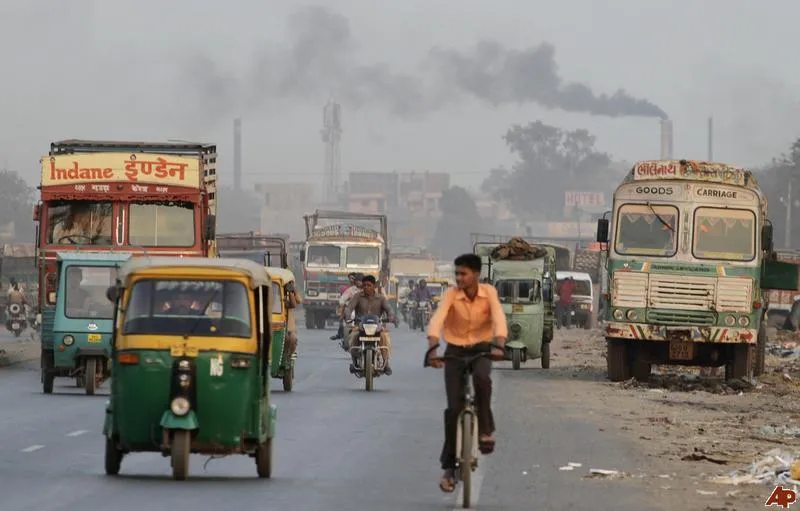Here are the top 10 risks that the world faces, and how India will be affected [Part 1]

The World Economic Forum (WEF) released its ninth edition of the report Global Risks 2014 recently at Davos, where world leaders have gathered for the annual event. The aim of the report is to understand how global risks are evolving and how their interconnectedness may lead to unexpected consequences over the long-term.
Global Risks 2014 helps global leaders to better understand, manage and perhaps mitigate risks. The opinions of over 700 leaders and decision-makers from the WEF’s global multi-stakeholder community were sought and they arrived at 31 selected global risks. Economic and social issues topped the list of risks. These 31 risks are bracketed into five categories (economic, environmental, geopolitical, technological and societal) according to level of concern, likelihood and impact, and interconnections between them.
Find the top 10 risks that the world faces in the decade ahead and what these risks mean to India as a country.
1) Fiscal crises in key economies:
India was insulated from the global 2007-08 financial crisis due to prudent financial planning in the past. But since then, through a series of political mismanagement and faulty policymaking, its growth has stalled. Last fiscal India’s GDP dropped to the lowest in a decade when the country grew at a tepid rate of 5 per cent. There has been more bad news. According to the controller general of accounts (CAG), India’s fiscal deficit widened to 94% of the 2012-13, in the eight-month period between April and November, from 80.4% in the year-ago period. With an eye of the elections this year, the government will be more concerned about appeasing the electorate, than reining in the deficit.
2) Structurally high unemployment/underemployment:
Given that most of India young, this aspect is particularly dangerous for India, as it might lead to large-scale social unrest and disquiet. According to the International Labor Organization’s (ILO) latest report on global employment trends report, India’s unemployment rate is expected to touch to 3.8% in 2014 from 3.7% in 2013. Alarmingly, according to a Labor Bureau survey, the educated youth are facing the brunt, unemployment among the graduates increased to 32 per cent during 2012-2013 compared to 19.4 per cent in 2011-2012. Remember the Arab Spring? One disaffected educated youth can bring an entire country to its knees.
3) Water crises:
Shekhar Kapur, the Indian director, has been crying himself hoarse about the acute problem of water shortage in India. According to the Indian government, 22 out of 32 major cities have to deal with daily shortages, and this is only set to worsen. It is not just quantity but also quality of water. According to the World Bank, 21% of communicable diseases in India are related to unsafe water, leading to 1,600 deaths daily from diarrhea alone. P. Sainath, Rural Affairs Editor of The Hindu and Magsaysay Award winner picks water as the cause for the biggest concern for India in the next 10 years.
4) Severe income disparity:
Following the 1991 balance of payment crisis India’s huge push to being a more open economy lead to tremendous growth. The surge in GDP growth created an entirely new middle class and lifted millions out of poverty. Economists suggested that a rising tide will lift all boats and the good fortune of those on top will trickle down to those at the bottom. But that hasn’t happened. Income inequality in India has grown considerably and doubled in the past 20 years, the country’s Gini coefficient (the official measure of income inequality), has gone from 0.32 to 0.38. According to data from the National Sample Survey Organization (NSSO), in 2000, the average spend (or income) of the richest group in urban areas was 12 times that of the poorest group; in 2012, it had increased to 15-fold. Disparity in rural areas was also high, with the richest spending 9 times more compared to 7 times in the same period.
5) Failure of climate change mitigation and adaptation:
An increase in mean surface temperatures and changes in rainfall pattern between 1971 and 2005 has impacted 27 per cent of the India’s geographical area, making some of them arid and the others attract additional rainfall. This is according to a study by the Central Research Institute for Dryland Agriculture (CRIDA).
Inability to deal with climate change can strike a deadly blow to India’s political, economic and social stability. The threat of the effects of climate change can lead to different threats like water shortages, lack of medical supplies, food insecurity and no shelter. India does not have the technological prowess or economic clout to be able to withstand the effects of climate change. China, for example has decided to throw money at the problem of air pollution, committing to $283 billion to clean up its dirty air. India will not be able to afford such economic largesse.
You can read the full report here.


![Here are the top 10 risks that the world faces, and how India will be affected [Part 1]](https://images.yourstory.com/cs/wordpress/2014/01/india-climate-change-2010-1-24-12-11-17.jpg?mode=crop&crop=faces&ar=16%3A9&format=auto&w=1920&q=75)




